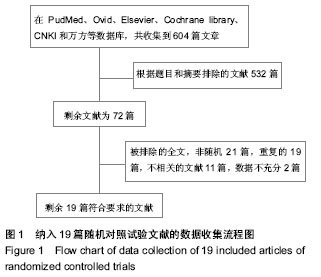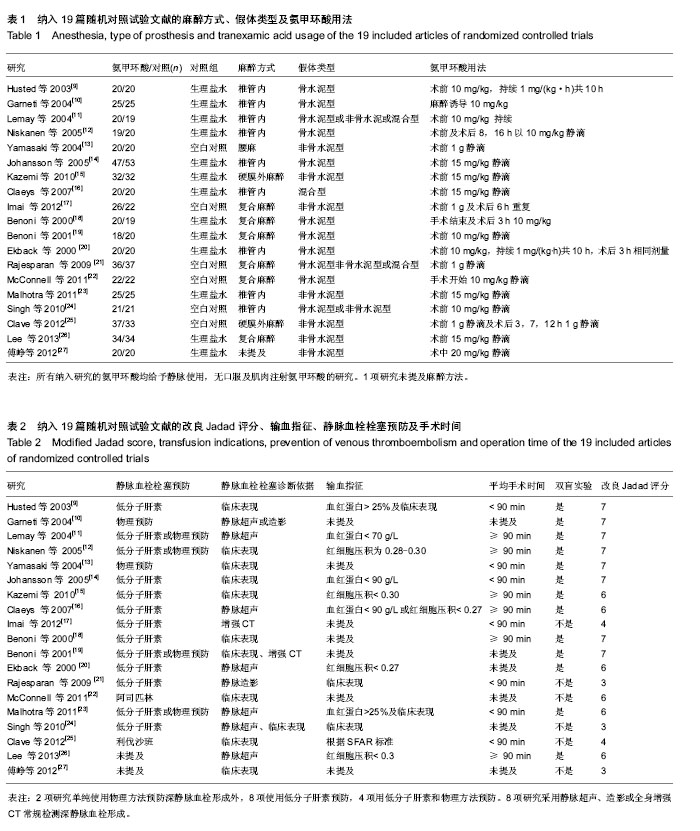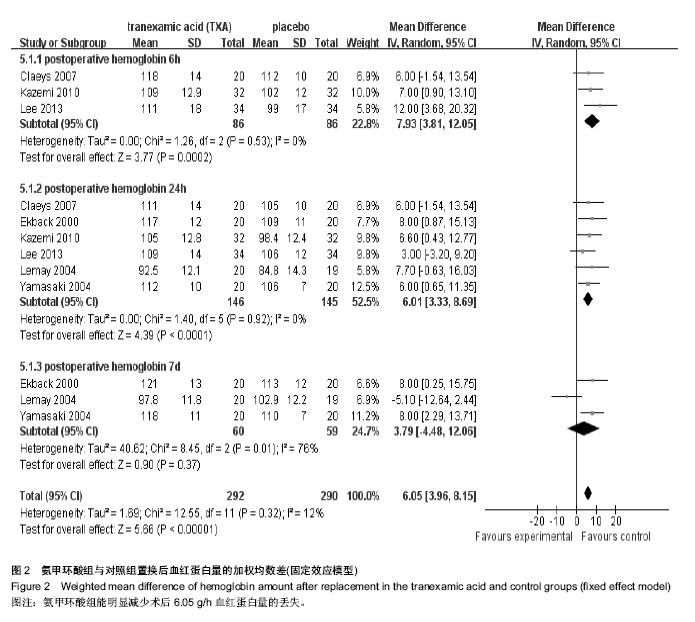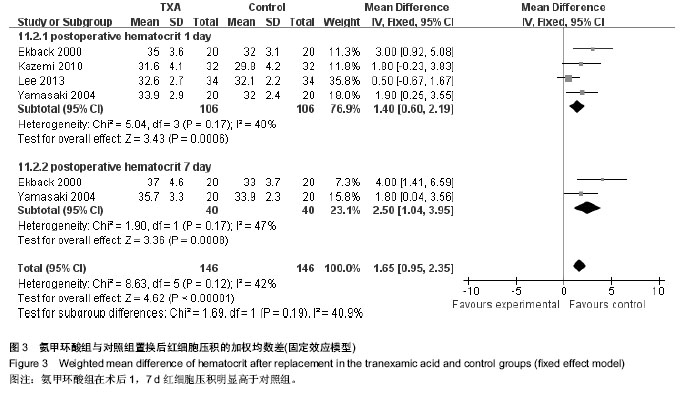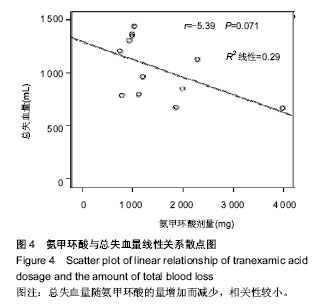| [1] Mednick RE, Alvi HM,Krishnan V,et al. Factors Affecting Readmission Rates Following Primary Total Hip Arthroplasty. J Bone Joint Surg Am.2014;96(14):1201-1209.
[2] Zhou XD, Tao LJ, Li J, et al.Do we really need tranexamic acid in total hip arthroplasty? A meta-analysis of nineteen randomized controlled trials. Arch Orthop Trauma Surg. 2013;133(7):1017-1027.
[3] Alshryda S, Mason J,Sarda P,et al.Topical (intra-articular) tranexamic acid reduces blood loss and transfusion rates following total hip replacement: a randomized controlled trial(TRANX-H).J Bone Joint Surg Am. 2013;95(21):1969- 1974.
[4] Bruce W,Campbell D,Daly D,et al.Practical recommendations for patient blood management and the reduction of perioperative transfusion in joint replacement surgery. ANZ J Surg. 2013;83(4):222-229.
[5] Zhao J, Li J, Zheng W, et al. Low Body Mass Index and Blood Loss in Primary Total Hip Arthroplasty: Results from 236 Consecutive Ankylosing Spondylitis Patients. Biomed Res Int. 2014;2014:742393.
[6] Watts CD, Pagnano MW. Minimising blood loss and transfusion in contemporary hip and knee arthroplasty. J Bone Joint Surg Br. 2012;94(11 Suppl A):8-10.
[7] Cardone D, Klein AA. Perioperative blood conservation. Eur J Anaesthesiol. 2009;26(9):722-729
[8] Samujh C, Falls TD, Wessel R. Decreased Blood Transfusion Following Revision Total Knee Arthroplasty Using Tranexamic Acid. J Arthroplasty. 2014. pii: S0883-5403(14)00335-0.
[9] Husted H, Blond L, Sonne-Holm S, et al. Tranexamic acid reduces blood loss and blood transfusions in primary total hip arthroplasty: a prospective randomized double-blind study in 40 patients. Acta Orthop Scand. 2003;74:665-669.
[10] Garneti N, Field J. Bone bleeding during total hip arthroplasty after administration of tranexamic acid. J Arthroplasty. 2004;19(4):488-492.
[11] Lemay E, Guay J, Côté C, et al. Tranexamicacidreduces the need for allogenic red blood cell transfusions in patients undergoing total hip replacement. Can J Anaesth. 2004; 51(1): 31-37.
[12] Niskanen RO, Korkala OL. Tranexamic acid reduces blood loss in cemented hip arthroplasty: a randomized, doubleblind study of39patients with osteoarthritis. Acta Orthop. 2005; 76(6):829-832.
[13] Yamasaki S, Masuhara K, Fuji T. Tranexamic acid reduces blood loss after cementless total hip arthroplasty- prospective randomized study in 40cases. Int Orthop. 2004;28(2):69-73.
[14] Johansson T, Pettersson LG, Lisander B. Tranexamic acid in total hip arthroplastysaves blood and money: a randomized, double- blind study in 100 patients. Acta Orthop. 2005;76(3): 314-319.
[15] Kazemi SM,Mosaffa F,Eajazi A,et al. The Effect of tranexamic acid on reducing Blood Loss in cementless total hip arthroplastyunder epidural anesthesia. Orthopedics. 2010; 33(1):1124-1130.
[16] Claeys MA, Vermeersch N, Haentjens P. Reduction of blood loss with tranexamic acids in primary total hip replacement surgery. Acta Chir Belg. 2007;107(4):397-401.
[17] Imai N, Dohmae Y, Suda K, et al. Tranexamic acid for reduction of blood loss during total hip arthroplasty.J Arthroplasty. 2012;27(10):1838-1842.
[18] Benoni G, Lethagen S, Nilsson P, et al.Tranexamic acid,given at the end of the operation,does not reduce postoperative blood loss in hip arthroplasty. Acta Orthop Scand. 2000;71: 250-254.
[19] Benoni G, Fredin H, Knebel R, et al. Blood conservation with tranexamic acid in total hip arthroplasty: a randomized, double-blind study in 40 primary operations. Acta Orthop Scand. 2001;72:442-448.
[20] Ekback G, Axelsson K, Ryttberg L, et al. Tranexamic acid reduces blood loss in total hip replacement surgery. Anesth Analg. 2000;91:1124-1130.
[21] Rajesparan K, Biant LC, Ahmad M, et al. The effect of an intravenous bolus of tranexamic acid on blood loss in total hip replacement. J Bone Joint Surg Br. 2009;91:776-783.
[22] McConnell JS, Shewale S, Munro NA, et al . Reduction of blood loss in primary hip arthroplasty with tranexamic acid or fibrin spray. Acta Orthop. 2011;82:660-663.
[23] Malhotra R, Kumar V, Garg B. The use of tranexamic acid to reduce blood loss in primary cementless total hip arthroplasty. Eur J Orthop Surg Traumatol.2010;21:101-104.
[24] Singh J, Ballal MS, Mitchell P, et al. Effects of tranexamic acid on blood loss during total hip arthroplasty. J Orthop Surg. 2010; 18:282-286.
[25] Clave A, Fazilleau F, Dumser D, et al. Efficacy of tranexamic acid on blood loss after primary cementless total hip replacement with rivaroxaban thromboprophylaxis: a case-control study in 70 patients. Orthop Traumatol Surg Res. 2012;98:48-490.
[26] Lee YC, Park SJ, Kim JS, et al. Effect of tranexamic acid on reducing postoperative blood loss in combined hypotensive epidural anesthesia and general anesthesia for total hip replacement. J Clin Anesth.2013;25(5):393-398.
[27] 傅峥,张健,姚海.氨甲环酸对全髋关节置换术隐性失血的影响[J]. 重庆医科大学学报,2012,37(4):359-361.
[28] Jadad AR,Moore RA,Carroll D.Assessing the quality of reports of randomized clinical trials: is blinding necessary?Control Clin Trials. 1996;17: 1-12.
[29] Dunn CJ,Goa KL. Tranexamie acid: a review of its use in surgery and other indications. Drugs. 1999;57: 1005-1032.
[30] Hiippala S,Strid L,Wennerstrand M,et al. Tranexmic acid(cyklokapron) reduces perioperative blood loss associated with total knee arthreplasty. Br J Anacsth. 1995;74: 534-537.
[31] Sukeik M, Alshryda S, Haddad FS, et al.Systematic review and meta-analysis of the use of tranexamic acid in total hip replacement. J Bone Joint Surg Br.2011;93:39-46.
[32] Liu X,Zhang X,Chen Y,et al. Hidden blood loss after total hip arthoplasty. J Arthroplasty. 2011;26: 1100-1105.
[33] Hynes MC, Calder P, Rosenfeld P, et al. The use of tranexamic acid to reduce blood loss duringtotal hip arthroplasty: an observational study. Ann R Coll Surg Engl. 2005;87(2):99-101.
[34] Ralley FE, Berta D, Binns V, et al. One intraoperative dose of tranexamicacid for patients having primary hip or knee arthroplasty. Clin Orthop Relat Res. 2010;468(7):1905-1911. |
